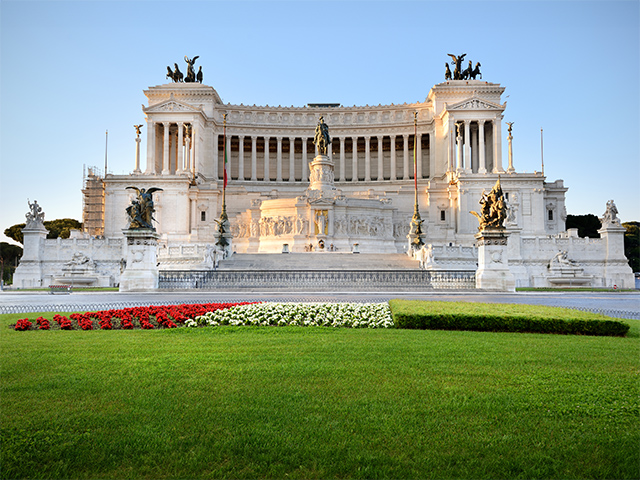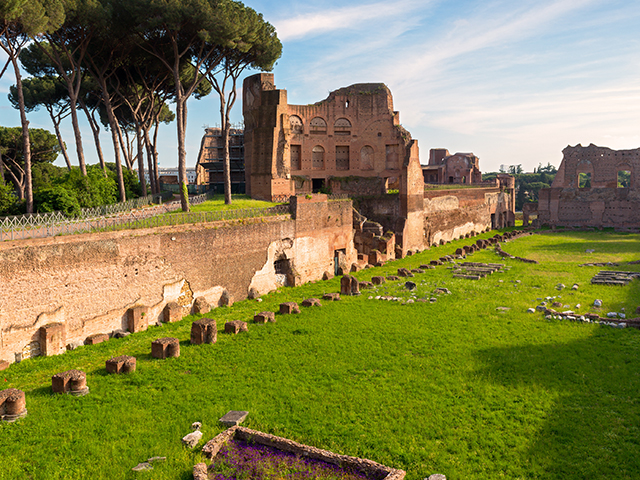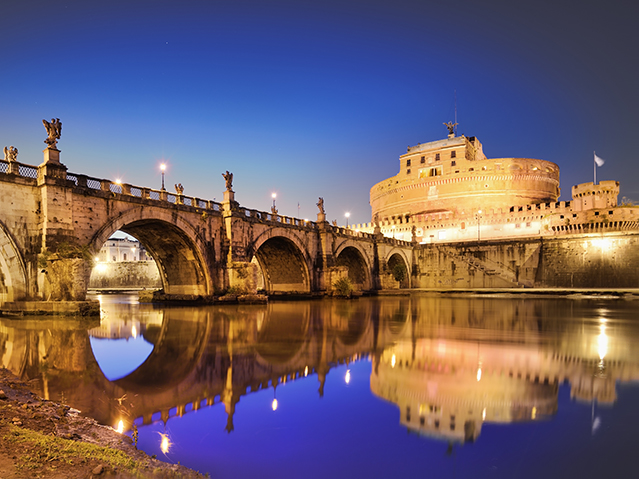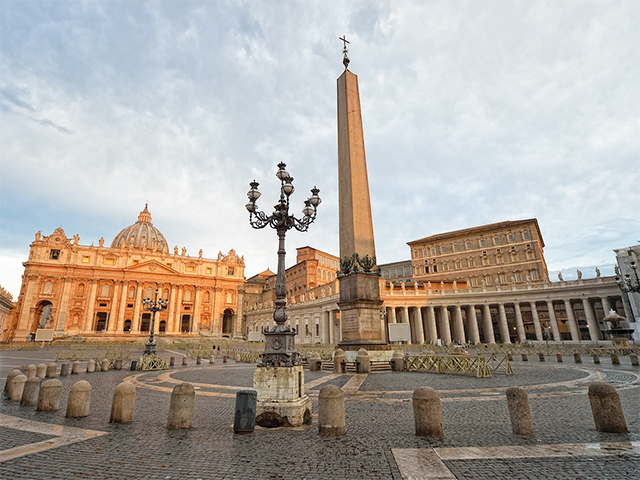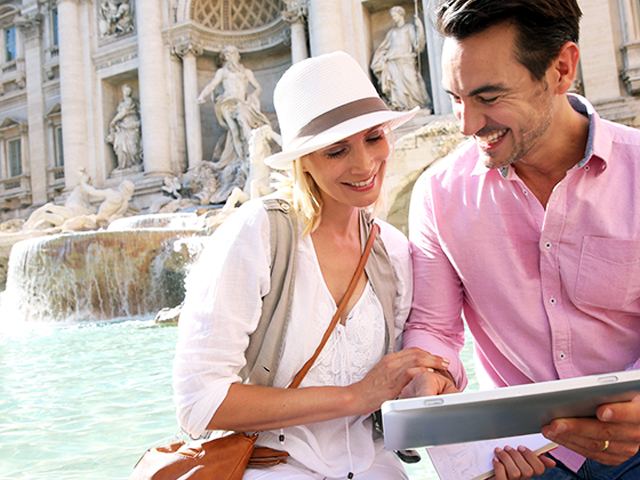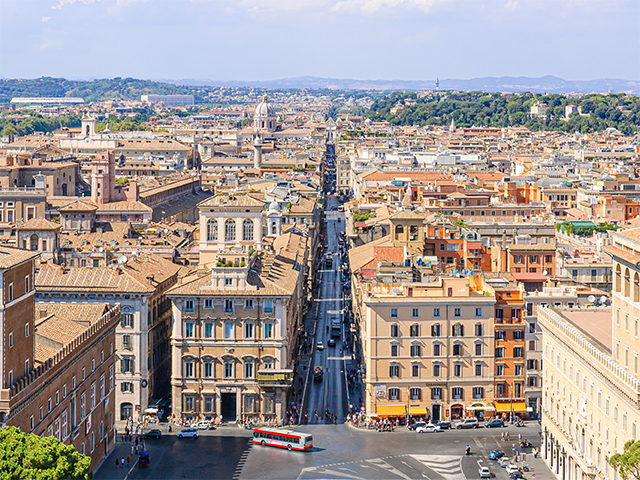EUR Roma: 5 Things to See and Do
Wide streets, modern white buildings, large spaces and much more: discover 5 things to see and do in Eur Roma, the modern district of the city.If you want to see another face of "Classical " Rome, the EUR district (EUR is the acronym of “Esposizione Universale di Roma”, meaning Rome’s Universal Exposition) with its wide streets, white buildings and large spaces is definitely worth a visit.
Here is a guide to our top 5 things to see and do in the EUR district.
EUR DISTRICT ARCHITECTURE WALKING TOUR
1. The Eur "Laghetto" and the Garden of Waterfalls
The first stop in the Eur district is the famous “Laghetto”, an artificial pond inside a large park extending over 160,000 square meters.
You can reach this beautiful little pond very easily: by metro, getting off at Metro stop B EUR Palasport, or by car (there are no parking problems on the weekends, while on weekdays it may be more difficult).
It is an ideal place to spend a couple of hours outdoors, strolling around the pond and admiring the ducks. There are also equipped areas for children, with large spaces.
Also not to be missed is the so-called "Passeggiata del Giappone" ("Japanese Promenade") a wonderful path with beautiful Sakura, a Japanese cherry tree. The city of Tokyo donated these group of trees to Rome in 1959. So today, as if we were in Japan, it is possible to see a beautiful cherry blossom between March and April.
Note also that you can rent a paddle boat or take a boat ride, exploring the basin.
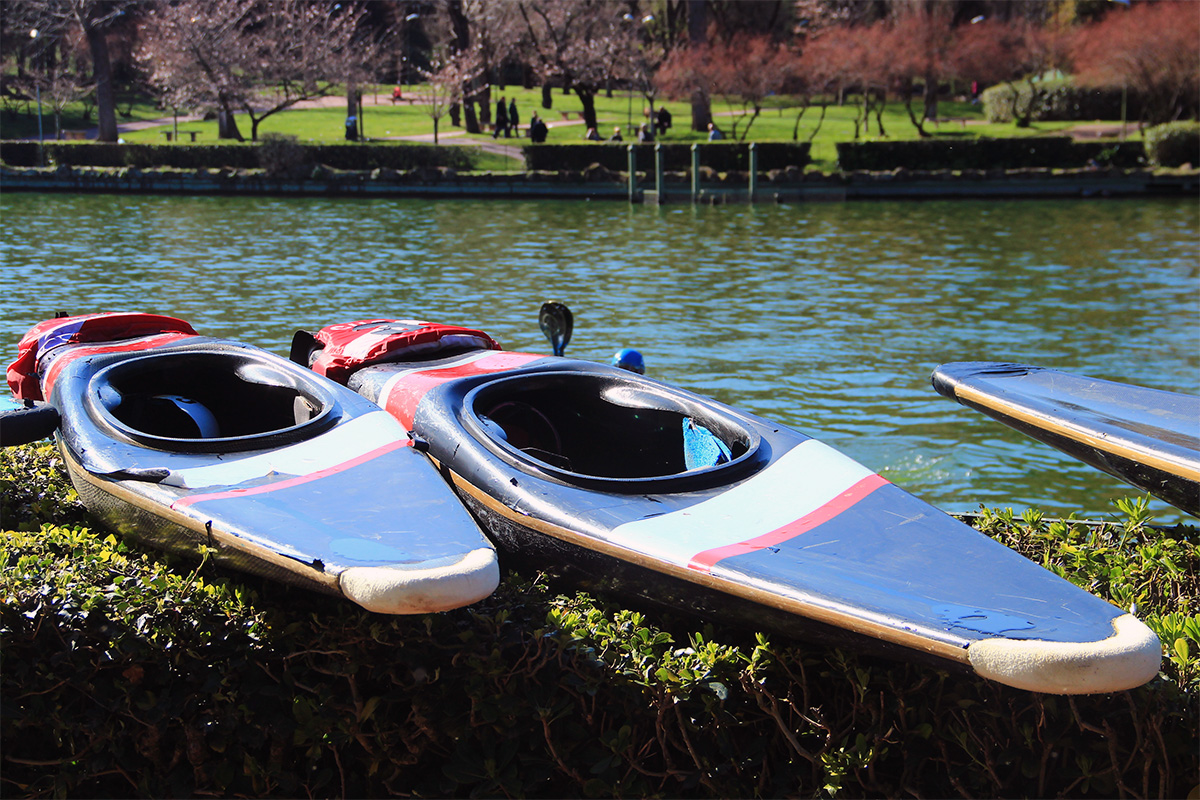
The Eur "laghetto"
GARDEN OF WATERFALLS
In the beautiful EUR park, a visit to the Garden of Waterfalls is a must!
Built in 1961 by the architect Raffaele De Vico, this garden is a real gem. You can see a set of waterfalls, fountains, natural stones and plants of various species.
The waterfalls have a double function in the park:
-
they contribute to the oxygenation of the pond water;
- they are a part of the hydroelectric system.
Reopened in 2017 after the restoration of the Hashi footbridge, the garden is a perfect combination of nature and architecture.
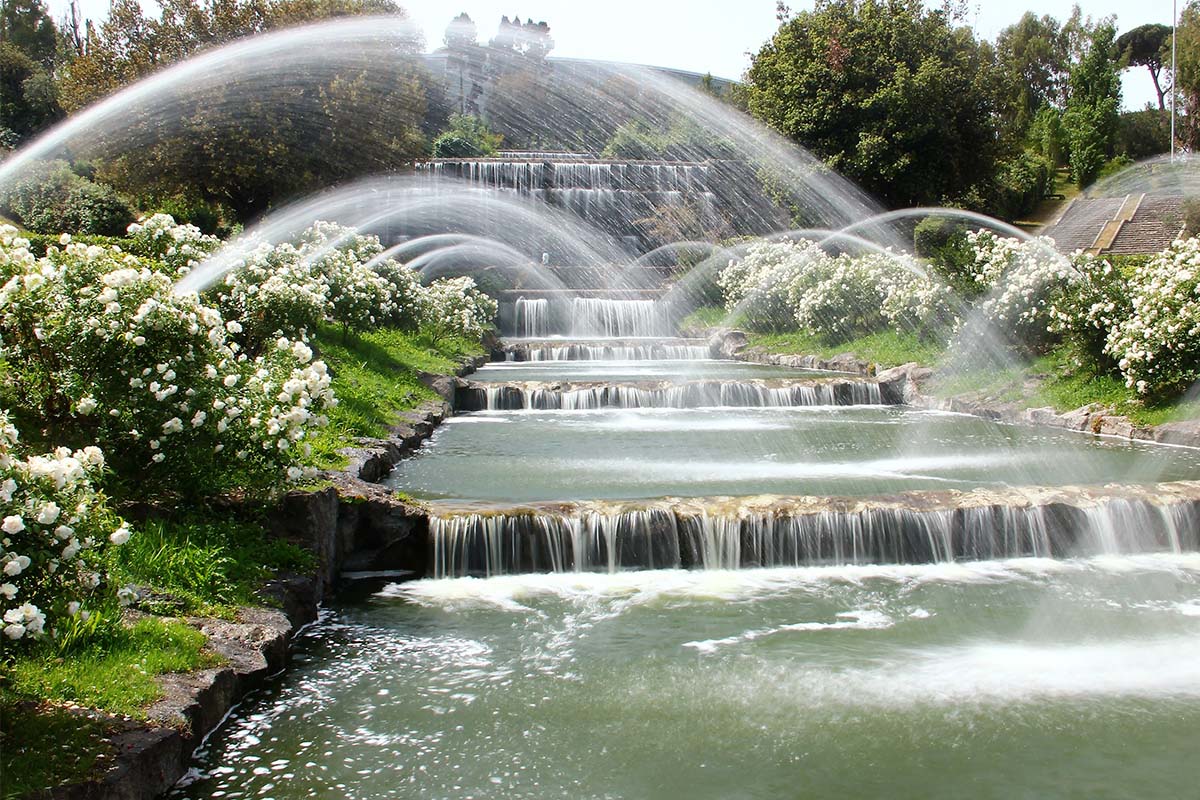
The wonderful Garden of Waterfalls
2. Basilica of St Peter and Paul
On the western side of the pond stands the modern Basilica of St. Peter and Paul.
To get there you have to walk a flight of stairs surrounded by plants and hedges, with the statues of the patron saints of the city, Peter and Paul, located above, at the extremities.
From the square in front of the Basilica you can admire a breathtaking view of the Eur district.
Undoubtedly, the most distinctive element is the beautiful hemispherical dome, which can be seen from a great distance. It is the fourth largest and most important dome in Rome, after the Pantheon, St. Peter's Basilica and St. John's Lateran Basilica.
The church has a Greek cross plan. Besides the statues of the two patrons, there are many others:
- Outside, on the pinnacle of the lantern, there is the bronze angel by Carmelo Abate.
- In the center of the facade, there are two great angels made by Federico Papi.
- Above the main altar, in the background of the apse, the figure of Christ triumphant by the sculptor Attilio Selva dominates, inserted in a mosaic representing the Martyrdom and glorification of the apostles Peter and Paul, made by his son Sergio.
- The bronze Crucifix was made by Giuseppe Graziosi from Modena.
- Duilio Cambellotti made the two ambons in bronze, with high reliefs narrating the main episodes of the preaching of St. Peter and St. Paul.
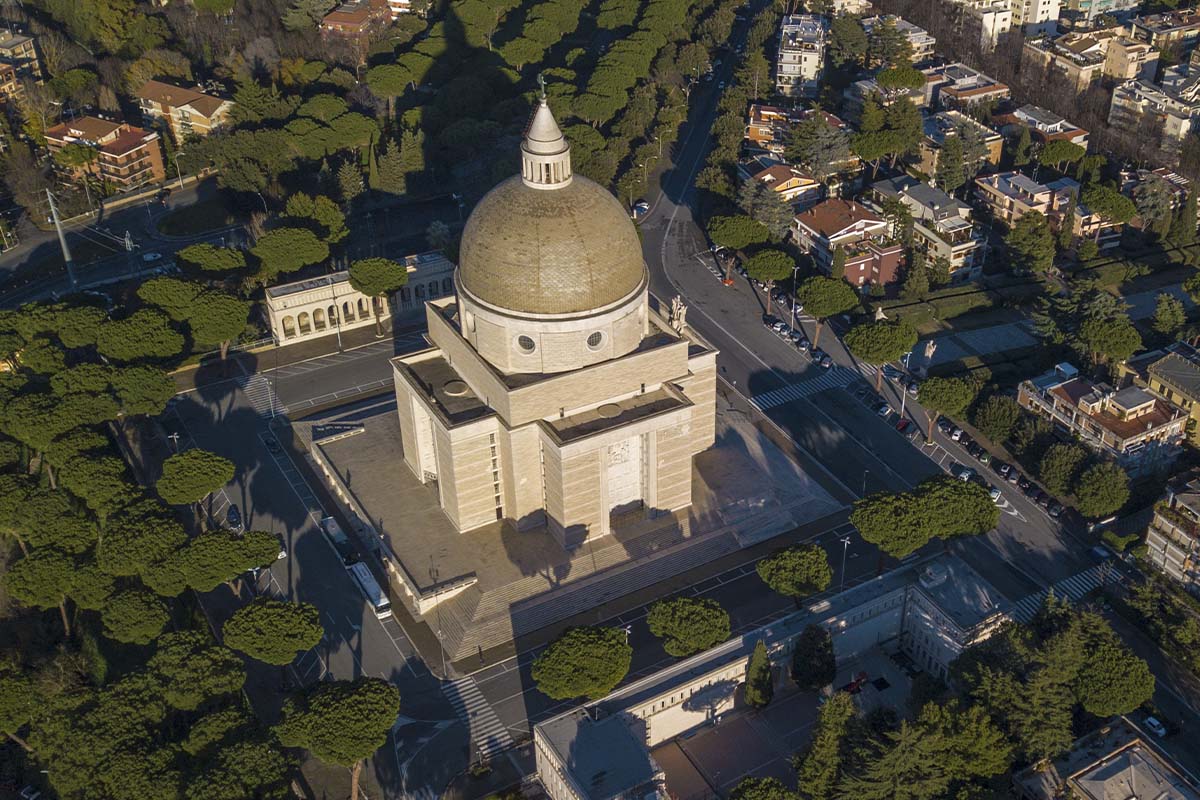
A beautiful view from the top of the Basilica of Saints Peter and Paul
3. Palace of Italian Civilization
Also not to be missed is the “Palazzo della Civiltà italiana” (Palace of Italian Civilization), better known as the Square Colosseum, which probably is the most important symbol of EUR, as it is considered the architectural icon of the Roman 20th century.
The building was designed by Giovanni Guerrini, Ernesto Lapadula and Mario Romano in 1937 for the 1942 Rome Universal Exposition. But the planned exhibition never took place due to World War II.
Its construction began in 1938 in the centre of an urban area called "Quadrato della Concordia".The works were interrupted in 1943 and were completed only after the war.
The entire structure of the building is made of reinforced concrete and is covered with travertine slabs.
On the sides of the two opposite staircases, there are four sculptural groups of the Dioscuri by Morbiducci and Felci, while under the arches of the first order there are 28 marble statues, depicting arts and human activities that celebrate the “Italic genius”.
A distinctive element is the inscription dedicated to the Italians that can be read on the top of the building: "A nation of poets, artists, heroes, saints, thinkers, scientists, navigators, migrants".
The "square Colosseum" has also been the protagonist of many films such as Rome, Open City by Rossellini, The Eclipse by Antonioni, Eight and a Half by Fellini and The Night Before the Exams by Brizzi.
Today the “Palazzo della Civiltà Romana” is home to the well-known luxury brand Fendi, but there is also an exhibition hall open to the public for several events.
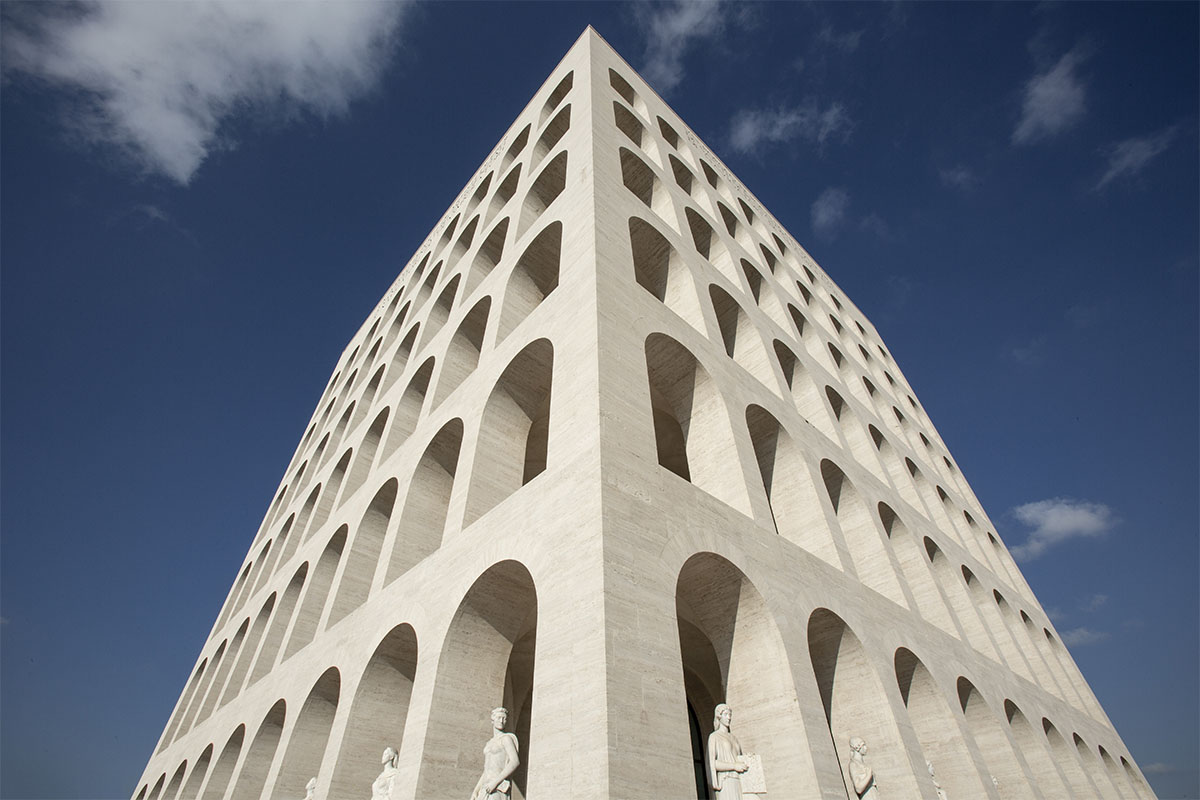
The palace of Italian Civilization, better known as "Square Colosseum"
4. Marconi's Obelisk
At the centre of Piazza Guglielmo Marconi stands the obelisk dedicated to the famous Italian physicist, designed by Arturo Dazzi.
The construction of the obelisk began in 1939 on the initiative of the Ministry of Popular Culture. Work resumed in 1951, although the Ministry of Public Works proposed the demolition of the monument. It was completed just before the Olympic Games in Rome in 1960, being inaugurated on December 12, 1959.
The 92 panels that make up this obelisk represent dances, songs, prayers and animals: it is a tribute to Guglielmo Marconi and his extraordinary discoveries.
There is an evident difference between the first part, made in the 1940s, where the figures appear defined, and the one made more than a decade later, characterized by primitive faces, exotic figures and twisted postures.
Today the obelisk in Piazza Marconi has become a meeting place for young people, especially at night.
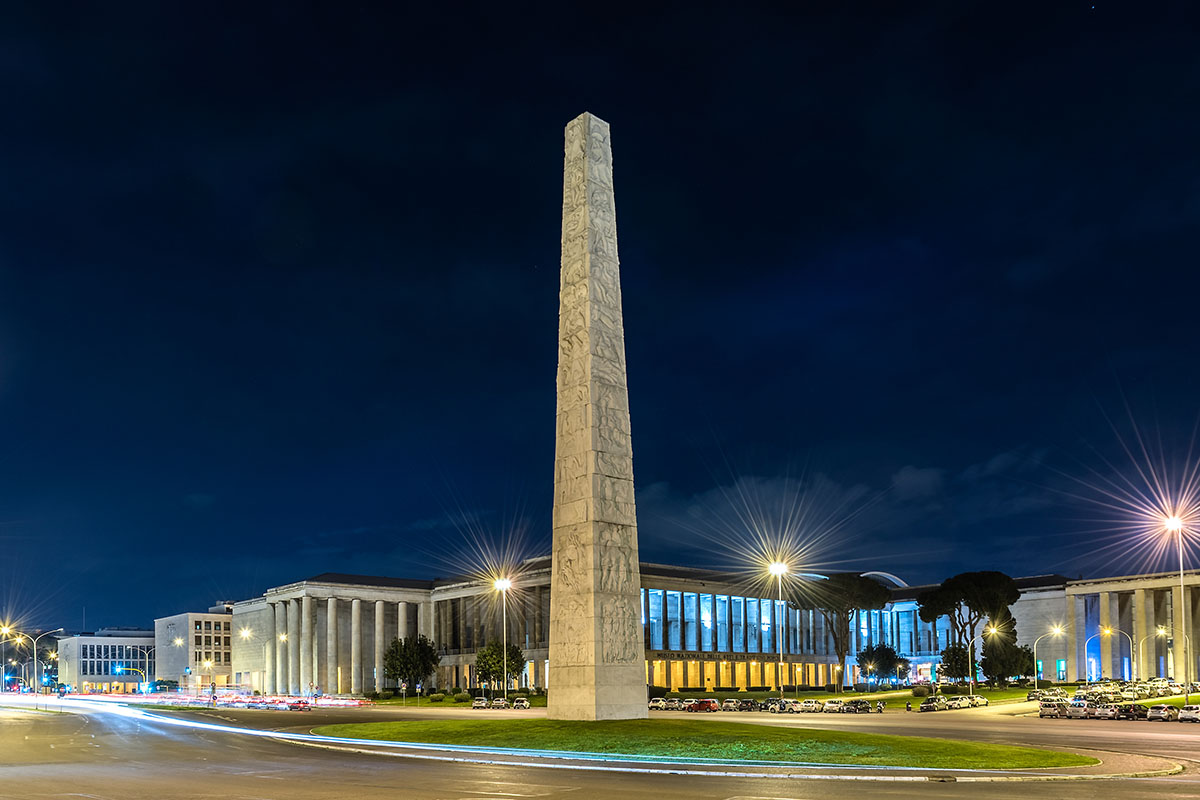
The obelisk in Piazza Marconi at night
5. The Cloud by Fuksas
To end our list of the top 5 things to see and do in the EUR district...We recommend "la Nuvola” (The Cloud”) by Fuksas, especially if you are an architecture lover.
This new Congress Center was inaugurated on October 29, 2016, after 15 years of works. It is a space of approximately 55,000 m² that can host up to 8,000 people, with several conference rooms, an auditorium and a very large commercial area.
The element that makes this structure unique is undoubtedly the artwork inside: the Cloud. Inside the "teak", a longitudinal steel and glass façade, are the auditorium, some bars, many rooms and much more.
From 2021 until the end of the same year, the Cloud became one of the main Covid-19 vaccination centers in the capital.

La Nuvola (the Cloud) by Fuksas
Finally, our tour through the Eur district ends with the LunEur. This is one of the oldest amusement parks in Italy: a magical place to entertain the little ones!
EUR DISTRICT ARCHITECTURE TOUR
Useful information
EUR district - Rome
- HOW TO GET THERE
- From the port of Civitavecchia:
By train: go to the train station and take the train for Roma Ostiense.
Take the metro line B and get off at Eur Palasport stop.



 PORT MOBILITY CIVITAVECCHIA
PORT MOBILITY CIVITAVECCHIA








